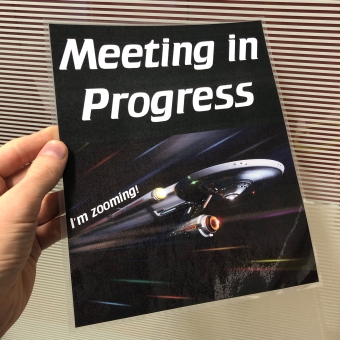Teaching a New Course During a Pandemic
Sophia Zi Gu and Peter Wich (CHEM ENG) are both relatively new teachers at UNSW. In 2019, Sophia proposed a new course, CEIC6712 Pharmaceutical Design and Engineering, to be taught for the first time in Term 2 2020. This would also be Sophia's very first time co-ordinating a new course, with Peter as co-lecturer. Unexpectedly, thanks to COVID19, Sophia was not only teaching this course for the first time, but teaching online and in a pandemic. Sophia and Peter took advantage of the opportunity that COVID19 presented, by creating an authentic and timely assessment task to enhance their students' learning.
May Lim talked to Sophia and Peter about their teaching philosophies, their approach to student engagement and how they turned the COVID19 pandemic to their advantage.
May: What is your teaching philosophy and approach to designing a course?
Peter: Although I had teaching experience as an Assistant Professor in Germany, I've gained a lot of additional knowledge around teaching strategies and approaches that focus on the delivery of a good course since starting at UNSW. When designing and delivering a course, it is definitely the main priority for me to apply a learner-centred approach, where the student benefits the most. Several UNSW programs like the Course Design Institute or the FULT program helped me to re-evaluate my role as a teacher and learn about delivery and assessment strategies that are good for the students. Teaching is not just having the lecturer standing in front of the students and "preaching" the content. It is about helping them to understand and apply what they learnt. And most importantly, to make the students excited about a topic.
Sophia: My teaching philosophy is when I design the course I think about what students need for their future career instead of what we can teach. When I deliver the course I encourage and facilitate learning instead of simply transferring knowledge, and when I evaluate teaching I look at students' learning outcomes instead of my teaching performance. To achieve that, the course contents not only cover basics and principles but also introduce drug development, commercialisation, manufacturing processes, and encourage students to analyse the pharmaceutical/nutraceutical products and design the formulations to self-assess their mastery of the course.
May: How did you adapt t he course for online teaching during the COVID19 crisis?
Sophia: We wanted to have an assessment task that is authentic. For a course on pharmaceutical design and engineering, the COVID19 pandemic presented a once in a lifetime (hopefully) opportunity. One thing that would turn our fortune around is a vaccine, so we asked the students to look into COVID19 vaccine development, while it is happening.
Students spent six weeks of the term in small groups working collaboratively to research, critically assess and write a report on an emerging drug or vaccine of their choice.
In the report, students were required to describe and analyse the current status of COVID19 drug/vaccine development – examples of drugs/vaccines under development, current development stages, limitations in terms of technology, manufacturing and regulation, and they were also encouraged to provide justified predictions on when we could expect an approved drug/vaccine against COVID19.
This assessment task required students to use and apply the principles and knowledge they learned in lectures, promoting the practice and improvement of deep learning and critical thinking in an authentic, real-world context.
I always think about what students need in their future career and one skill they would need is to think critically. I want the students to not just focus on what is reported in the newspaper, journals and magazines, but really think about the limitations of the drugs and the vaccine development. This is an important skill to have if they are to become pharmaceutical engineers. The students really liked this kind of authentic assessment. Some of the reports are very good – so good I think we should publish them!
Peter: We also implemented a peer assessment element in an online workshop, where the students presented their findings on the vaccine development. During this workshop everyone could assess each other’s performance and give feedback. I was very surprised and happy to see that the students were very thorough and accurate in their assessment, giving quite similar marks as the instructors.
May: How did you approach student engagement, and what was the students' response to the course?
Sophia: One good thing about this course was that we had a lot of interaction with the students on Microsoft Teams. We communicated with the students frequently. We constantly made announcements and sent reminders so we could keep in touch. And we always responded to their questions quickly. We also ran consultation sessions.
Peter: We had great feedback from the students. They liked the content and found the course quite interesting. The students said it is was a good overview of the traditional and modern drug development processes. Most suggestions for improvement were related to the online only delivery (which was unfortunately out of our hands due to COVID19). I think both the students and we as instructors feel the same, that we would prefer a more direct interaction and not having to talk into a screen.
Sophia: In the myExperience survey, a typical comment was "I love how she was very available for communication with the students". I think the students can feel how much you care about them, how much you want to help them, how much you encourage or motivate their learning. They know it.
***
Sophia: I want to acknowledge May Lim, who provided inspiring advice on course design and teaching, which was very important for this course development. Also Ilker Cokcetin, in the Faculty Teaching & Learning Team, who helped me so much with gradebook setup and Moodle troubleshooting. Without their help, we could not make this course happen



